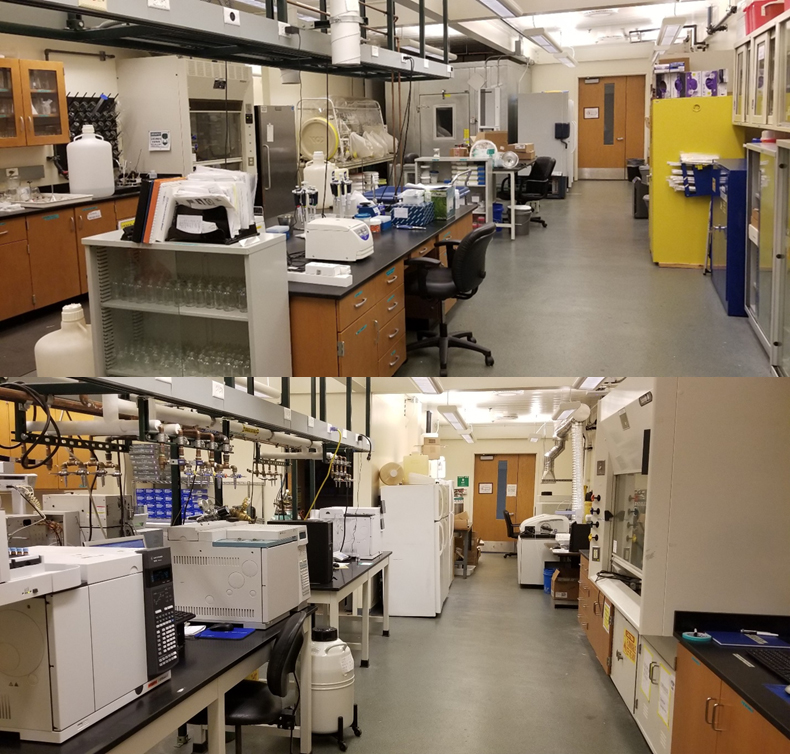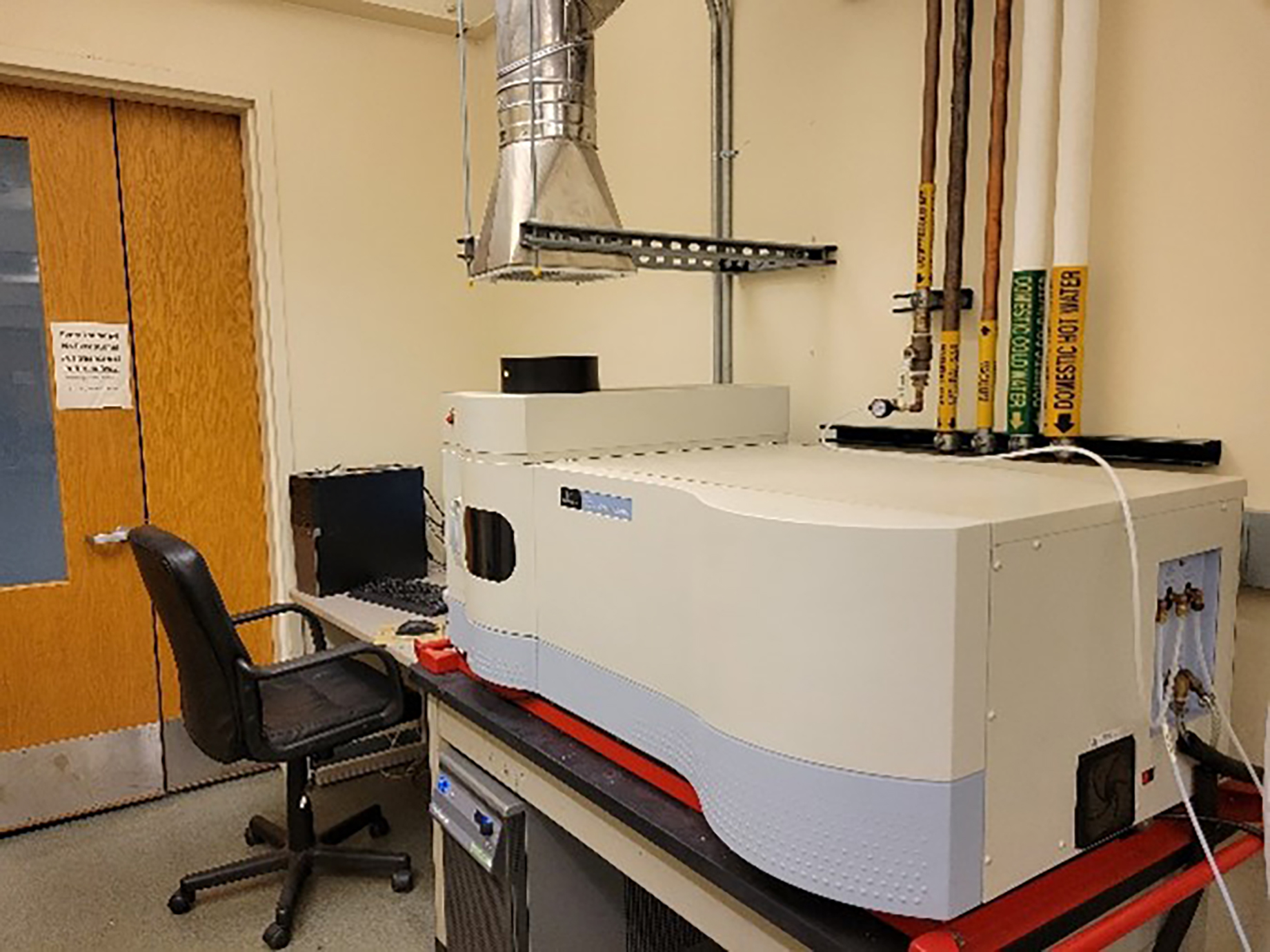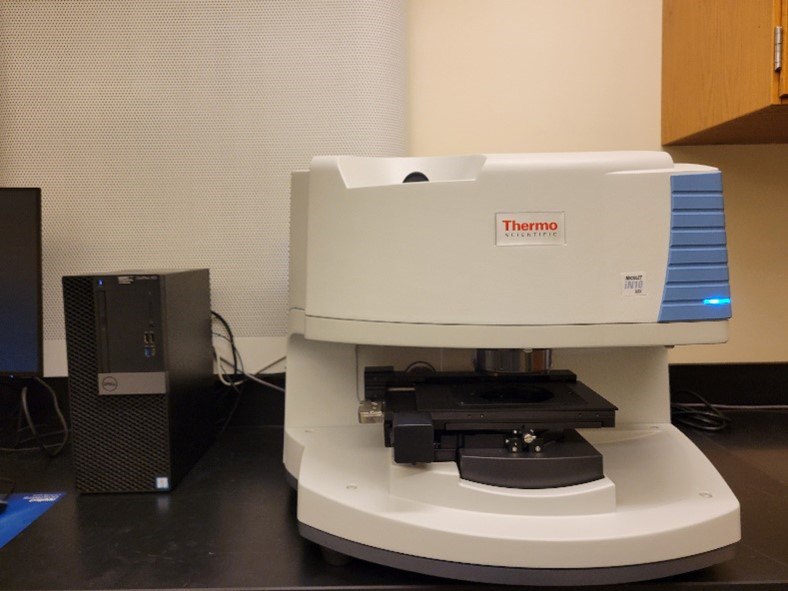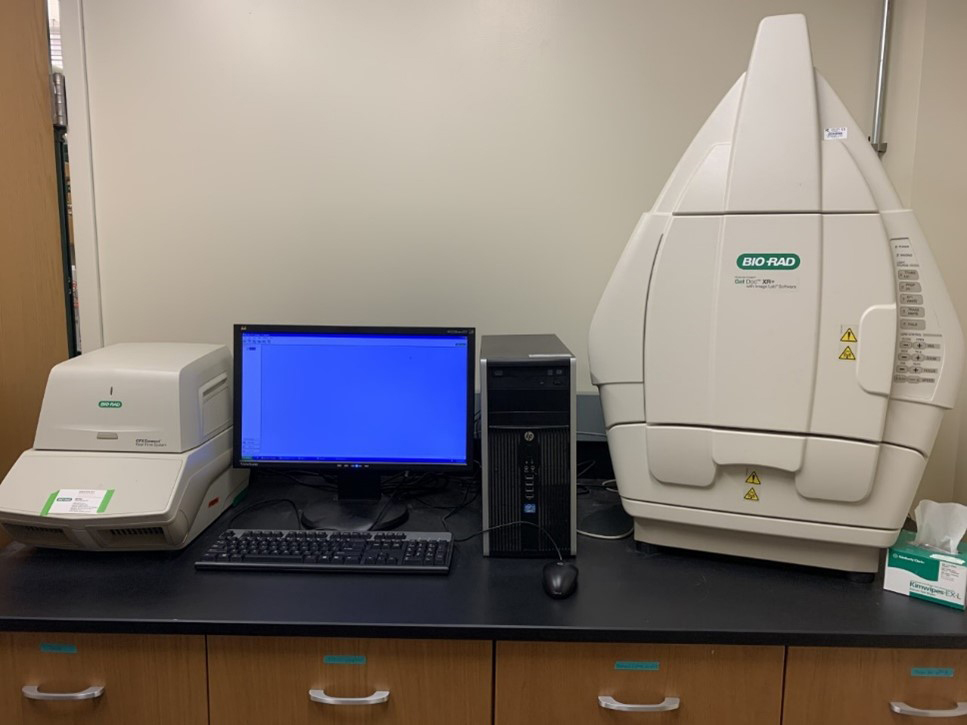Civil & Environmental Engineering
Environmental Engineering Lab Cluster
The Environmental Engineering Laboratory Cluster is located on the second floor of
the Advanced Technology Research Center (ATRC) on the main Stillwater campus. This
cluster consists of five adjacent rooms totaling 3,440 ft2 including an analytical laboratory, a microbial molecular analysis lab, two wet laboratories,
and one microplastics laboratory (Fig.1). Office spaces for graduate students are
located on the same floor. The ATRC is managed by full time staff in the College of
Engineering, Architecture, and Technology.
In Spring 2021, the Environmental Engineering Laboratory Cluster housed approximately 20 PhD, MS, and undergraduate researchers. Environmental Engineering research at OSU has seen a growth of 68%, 37%, and 22% in year-over-year expenditures over the last three years, and currently has over $300K of research expenditures per year.
- Major Equipment Located in the Environmental Engineering Laboratory Cluster
Major equipment of the analytical lab includes three Agilent gas chromatographs (GC): GC 7890 with-flame ionization detection (FID) with a liquid autosampler (Fig. 2A), GC 6890 with electron capture detection (ECD) and thermal conductivity detection (TCD) (Figure 1B), and GC-TCD 8890 with two channels with a direct gas line for continuous analyses (Fig 2C).
Fig. 2 Gas chromatographs. GC-FID/ECD (A), GC-ECD/TCD (B) GC-TCD (C)The analytical lab also includes a Varian Liquid Chromatography (LC) system with a 320-MS quadrupole Mass Spectrometer with ESI and APCI ionization, and Prostar 330 photodiode array (PDA) detector (Fig. 3A) and Varian CP3800 GC with electron capture detector (ECD), flame ionization detection (FID), pulsed flame photometric detector (PFPD) (Fig 3B).
Fig. 3 LC-MS (A) and GC-MS (B)The laboratory contains both an inductively coupled plasma mass spectrometer (ICP-MS) (not shown) and an inductively coupled plasma optical emission spectrometer (ICP-OES) capable of quantifying trace elements and metals at <10 μg/L concentrations in water samples (Fig. 4.)
Fig. 4 ICP-OESA Nicolet iN10 MX Infrared Imaging Microscope equipped with a DTGS, LN cooled MCT-A, and ATR detector with a germanium crystal for the analysis of microplastics and other emergent contaminants (Fig. 5).
Fig. 5. Infrared Imaging MicroscopeThe microbial molecular analysis lab includes a Bio-Rad CFX Connect PCR Detection System for qPCR, Bio-Rad GelDoc XR with Image Lab Molecular Imaging System a UV transilluminator with imaging system (Fig. 6). Also (not shown), a DCode System for DGGE and SDS-PAGE (BioRad), three gradient T100 thermal cyclers (Bio-Rad), three complete electrophoresis systems (Mupid-exU) are also used for molecular DNA analysis.
Fig. 6. Bio-Rad CFX Connect PCR Detection System - Funding
The environmental research team is funded by NSF, NIH, USGS, Bureau of Reclamation, and several other state and federal agencies.
Current Funded Research Projects
- Center for Native American Environmental Health Equity Research Project: Generation of Microplastics due to Open Burning and Open Dumping of Solid Waste in Tribal Land; Univ. of New Mexico subaward on NIMHD grant
- Evaluation of Heavy Metal Adsorption onto Microplastics; New Mexico Water Resources Research Institute
- Microplastic Pollution of Oklahoma Freshwater Systems and the Potential Interaction with Contaminants of Environmental and Health Concern; Oklahoma Water Resources Center; USGS 104b Program
- Applying Unmanned Systems for Water Quality Monitoring; US Bureau of Reclamation
- Produced Water Treatment Fueled by High Value Product Extraction; OCAST
- Socially Sustainable Solutions for Water, Carbon, and Infrastructure Resilience in Oklahoma; NSF
- Presidents Fellowship Faculty Research Award – PFAS and PFOS in Oklahoma’s Waters; OSU
- Complete Biodegradation of Insensitive High Explosive Compounds; Univ. Of Arizona subaward on DOD SERDP grant
- Impacts of Metals on Disinfection Byproduct Precursor Formation in Bacteria; NSF
Contact Information
Researchers within the OSU community who are interested in collaboration and/or using this equipment should contact:






